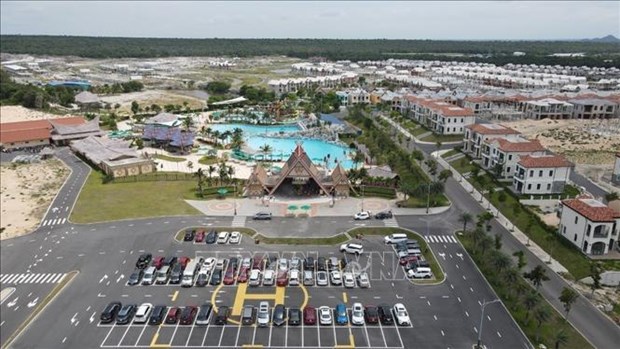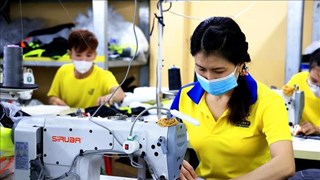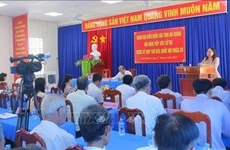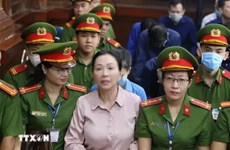Rural areas in Ba Ria - Vung Tau gain facelift
After almost 13 years of building a new-style countryside, rural areas in the southern province of Ba Ria - Vung Tau have enjoyed major improvements with sustainability-oriented economic development, upgraded infrastructure, and better material and spiritual lives for the citizens who live there.
 Chau Duc district of Ba Ria - Vung Tau has gained a facelift thanks to building new-style rural areas. (Photo: VNA)
Chau Duc district of Ba Ria - Vung Tau has gained a facelift thanks to building new-style rural areas. (Photo: VNA)Strong improvements
Recognized as a new-style rural area in 2022, Chau Duc district has gained a true facelift thanks to the national target programme on building new-style countryside. From an agriculture-based, remote and poor district, it now has all of its 15 communes listed as new-style rural areas, including seven meeting advanced standards, after over 10 years of progamme implementation.
To help its communes satisfy the new-style rural area criteria, Chau Duc has made use of funding from the state budget and mobilized every possible resource from local people, organizations, and enterprises.
Nguyen Tan Ban, Chairman of the Chau Duc People’s Committee, said the district has engaged the entire political system in the task and improved communications to raise public awareness of the goals and purposes of the new-style countryside building.
In the next phase, it will work to make typical products, maintain cultural identities, develop craft villages, and create signature products of community tourism, thereby improving local income, he noted.
Meanwhile, Xuyen Moc used to be the poorest district of Ba Ria - Vung Tau at the time it began new-style countryside building efforts. Per capita income stood at only 16.62 million VND (about 690 USD at the current exchange rate) per annum in 2010, when the national target programme was launched nationwide.
The programme has helped give a facelift to this remote locality. Particularly, per capita income reached 69 million VND by the end of 2022.
Chairwoman of the Xuyen Moc People’s Committee Le Thi Trang Dai said that building new-style rural areas has a start but will never end. Building on the achievements in this regard for the last more than 10 years, the district will exert more efforts to help its new-style rural communes meet the standards of advanced and model areas.
The building of a new-style countryside will become more substantive to further improve the material and spiritual lives of rural citizens, she added.
Building new-style countryside a constant task
 Infrastructure in Xuyen Moc district, Ba Ria - Vung Tau province, has been modernised in recent years. (Photo: VNA)
Infrastructure in Xuyen Moc district, Ba Ria - Vung Tau province, has been modernised in recent years. (Photo: VNA)Meanwhile, six of the eight district-level localities have completed building new-style countryside and earned the Prime Minister’s recognition. The two remainders are preparing dossiers to submit to the PM to seek the new-style rural district status. Besides, Long Dien and Dat Do districts are striving to satisfy advanced criteria in 2023.
In particular, Ba Ria - Vung Tau no longer has poor or near-poor households according to the national poverty criteria. Annual per capita income now stands at 67 million VND in new-style rural communes and 72 million VND in those meeting advanced standards, statistics show.
Ninety-one local agricultural products have been rated at least three stars under the One Commune, One Product (OCOP) programme.
Identifying building new-style rural areas as a constant task during its socio-economic development process, Ba Ria - Vung Tau targets that by 2025, the agricultural production value in new-style rural communes will grow by 4.12% on average annually, 38 communes (80.85%) meet advanced new-style rural area standards, and 14 others (29.78%) be recognised as model areas.
It also looks to reduce the household poverty rate calculated based on the province’s criteria to 0.5% or below, and increase the agricultural production value and income per farmland unit by 1.5 times from 2020./.













